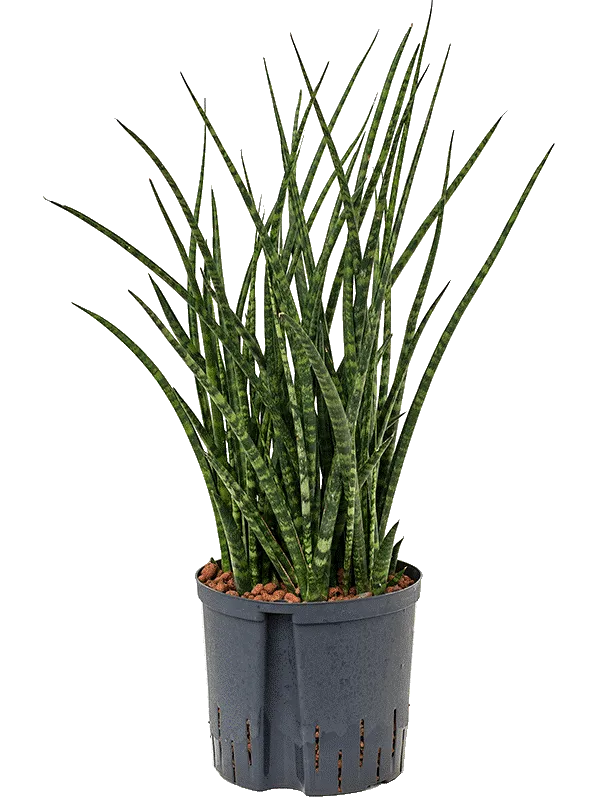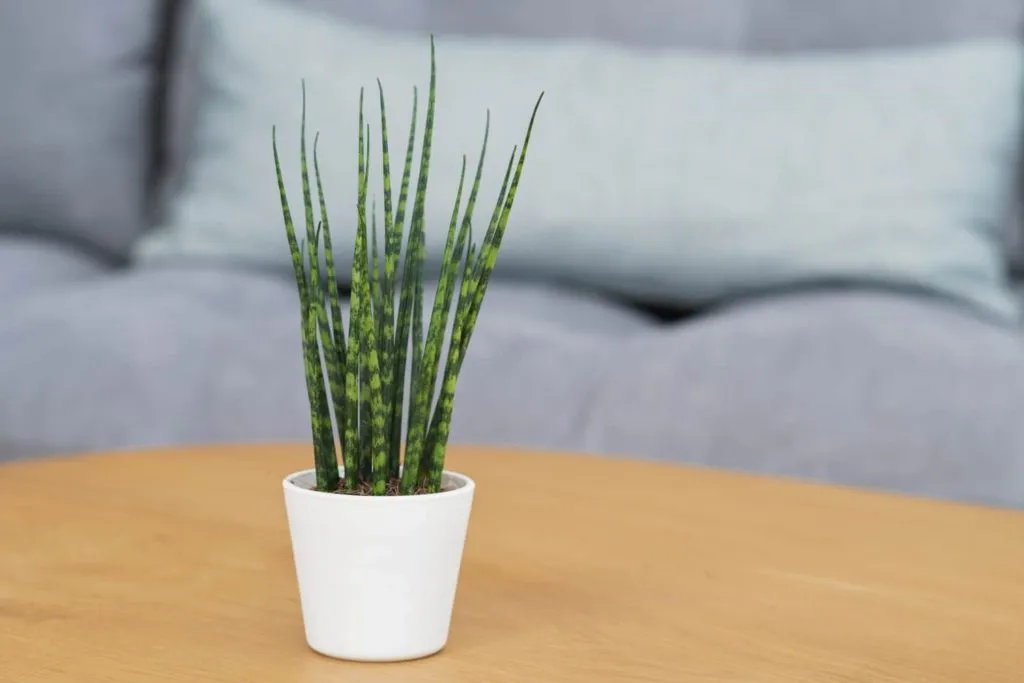Attractive plants are always in demand, especially if you are a plant enthusiast. If you are also willing to introduce a likely plant in your garden, then Sansevieria Fernwood is your perfect choice.
It is a native African plant that you will love to grow in your garden. The plant has beautiful, pointed leaves of a lighter shade and is striped (snake-like).
Sansevieria Fernwood will create an attractive visual impact in your garden and will be a spotlight on your garden.
Sansevieria Fernwood is also known as a mother-in-law plant and is of a unique texture shape.
Shortly, you will love to introduce the plant to your garden. The fantastic thing about these plants is that they function to purify your air. So, investing in this plant will never make you feel regret.

If you are also deciding to grow this attractive plant, read the following guide. It will help you to care for and propagate your Sansevieria Fernwood.
Sansevieria Fernwood Classification
Family: Asparagaceae.
Species: S. Fernwood.
Genus: Sansevieria
What is the common name of Sansevieria Fernwood?
- Fernwood snake plant.
- Mother-in-law’s tongue.
- Snake plant.
What are the characteristic features of Sansevieria Fernwood?
- The plant can reach an average height of about 2 to 4 feet.
- Sansevieria Fernwood has enormous leaves which are elongated in shape, and all these leaves join at the base to develop a plant body.
Sansevieria Fernwood Flower:
- Although these plants bloom, it is sporadic. Mostly blooming occurs in the spring season.
- The length of Sansevieria Fernwood flowers is 1 meter.
Also Check: Best Sansevieria Cylindrica Care Guide # 1

How to do Sansevieria Fernwood Care?
These plants do not die quickly, due to which they are known as ‘indestructible plants.’ The only requirement of these plants is that they need the right amount of water to grow well.
Let us ponder upon the care requirements of your amazing Sansevieria Fernwood.
Fertilizer requirements:
Sansevieria Fernwood stays happy in good nutrition and fertilizing the plant once a month is preferable.
The proper season to fertilize the plant is in spring and summer. You can choose any household fertilizer to meet the nutrition requirements of the plant.
Pro tip:
The perfect fertilizer that you can choose to grow, Sansevieria Fernwood, is a good quality domestic fertilizer. Just buy this and follow the instructions written on the pack.
Humidity requirements:
Sansevieria Fernwood does not prefer to live in a humid environment, and a dry environment does the wonder to grow this plant.
Higher levels of humidity can result in causing leaf rot and fungal attack.
Pot requirements:
Potting is highly necessary to improve your plant’s growth, as the underground root system needs space to grow fast.
Also, the characteristic feature of this plant is that it loves to grow in large and deep pots.
So, you need to do potting from time to time to make your plant happy. Congested pots can result in poor quality growth and unhealthy foliage.
Soil requirements:
Like most plants, Sansevieria Fernwood also loves to grow in loose and well-drained soil.
Keep the pH of the soil within 6.1 to 7.8, and you can also use the cactus mix as it is a perfect choice to fulfill the soil requirements of your plants.
Pro tip:
Do not place your Sansevieria Fernwood in wet and muddy soil, as it can make your beautiful plant die.
Sunlight requirements:
The ideal sunlight to let your Sansevieria Fernwood grow fast is bright indirect light. Do not place your plant for a long time in direct sun, and it can result in causing brown tips of your leaves.
However, some hours of the morning, direct sunlight will not harm the plant. So, you can also let your plant do some basking in the direct morning sun.
Pro tip:
Are you living in a place that does have enough sunlight? Do not worry; buy artificial light and help your plants grow well. You can also use this technique if you are growing your plant indoors.
Temperature requirements:
The ideal temperature that will help grow your plant fast ranges from 21 to 32 degrees Celsius. Sansevieria Fernwood is a lover of warm environments and does have the tolerance to bear winter and cold.
So, choose a warm place to grow these attractive succulents and let your plant grow enthusiastically.
Pro tip:
If you grow in a cold temperature environment, using artificial yellow lights will help maintain the temperature.
Watering requirements:
You do not need to follow tricky techniques to water Sansevieria Fernwood. Just water the plant when the soil gets dried.
The right time to water these plants is once a week, and this requirement decreases even more in winters. So, reduce the watering schedule of Sansevieria Fernwood in winters and fall.
Do not overwater the plant, as they do not love to grow in the soggy soil. Extra water can create challenging conditions for your Sansevieria Fernwood to survive.
So, avoid extra sips of water and prevent your plant from root rot or fungal attack.
Pro tip:
Water your Sansevieria Fernwood once a week, and keep this thing in mind that overwatering can result in killing your plant.
What is the growth zone of Sansevieria Fernwood?
The perfect USDA growth zone of Sansevieria Fernwood is from 9a to 11. Also, they grow perfectly in the outdoors, indicating a growth zone of 4a to 11.
Is Sansevieria Fernwood toxic?
Sansevieria Fernwood is toxic for both humans and animals, so you need to keep an eye on your children and pets. Ingesting the plant can result in causing nausea and vomiting.
Is Sansevieria Fernwood air purifier?
The fantastic thing about Sansevieria Fernwood is that it has air purifying properties, and it plays its role by transforming carbon dioxide into oxygen. Also, they clean the air by removing toxins like xylene, benzene, and formaldehyde.
You May Also Like: Tillandsia Juncea Care Guide | Propagation | Pro Tips
Step by Step Sansevieria Fernwood Propagation
Sansevieria Fernwood is relatively easy to propagate, and you can use multiple methods to clone the baby plant. The following are some propagation methods of Sansevieria Fernwood:
- Leaf cuttings
- Rhizomes and tubers division
- Bulbs and corns
- Offsets or pups

How to propagate Sansevieria Fernwood using Leaf Cuttings?
- The first step is to take a sharp knife to cut the mature leaves of Sansevieria Fernwood.
- The next step is to place the leave-in soil or sphagnum moss.
- Let the soil cover a quarter of the leaf cutting, as it will help develop the roots fast.
- Place the container in indirect sunlight and let it grow.
Sansevieria Fernwood water Propagation
- You can quickly propagate your Sansevieria Fernwood using water. Choose water instead of soil, and it is highly preferable to use mineral water.
- You can also use tap water, but you need to place the jar for the whole night to let the macronutrients and other toxins settle at the bottom.
- Just dip the leaf of Sansevieria Fernwood in water and change the water after every week.
What common Problems are Faced by Sansevieria Fernwood?
The best thing about these plants is that they are highly resilient, which means they are not prone to diseases.
Also, they do not suffer from the pest’s attack and diseases. Here are some issues that your Sansevieria Fernwood might face.
Sansevieria Fernwood Brown Tips:
The leading cause of Sansevieria Fernwood brown tips is overwatering. If you are providing your snake plant with extra sips of water, then it results in causing the tips of the leaves to turn brown.
Solution:
Water your plant once a week and also water the plant only when the soil gets dried. Reduce watering consistency in winters and fall.
Sansevieria Fernwood Yellow Leaves:
Sometimes the leaves of Sansevieria Fernwood also turn yellow, and it occurs due to the problems with sunlight and overwatering. So, if you notice anything like this, find out the solution to regain your plant’s health.
Solution:
Avoid direct sunlight and maintain a watering schedule.
Pests Attack:
Keeping the soil of your Sansevieria Fernwood soggy for a long time can increase the chances of pests attacks and mealy bugs. You need to deal with the issue to prevent the death of your Sansevieria Fernwood.
Solution:
Using neem oil or rubbing alcohol on the plant can help.
Final thoughts:
Sansevieria Fernwood is a popular plant due to its attractive look and resilient nature. The shade tolerance and mesmerizing foliage make it a favorite choice of growers.
It is a hardy plant, and you can quickly grow it both indoors and outdoors. Just consider the care requirements of your plant and let it stay happy.
Sansevieria Fernwood will also benefit you, mainly due to its air-purifying nature. However, it can be toxic to your pets and kids. Happy growing!
Frequently asked questions about Sansevieria Fernwood
How to care for Sansevieria Fernwood?
You can easily care for Sansevieria Fernwood by maintaining light and water requirements. Water the plant once a week and place it in bright indirect light.
What is the growing speed of Sansevieria Fernwood?
It is a allow to grow and takes months and years to reach its maximum length. The height of the plant ranges from 2 to 6 feet.
Why is my Sansevieria Fernwood leaves turning brown?
The leading cause of Sansevieria Fernwood brown tips is overwatering. If you are providing your snake plant with extra sips of water, then it results in causing the tips of the leaves to turn brown. You can deal with this issue by watering the plant once a week.
Why is my Sansevieria Fernwood turning yellow?
Sometimes the leaves of Sansevieria Fernwood also turn yellow, and it occurs due to the problems with sunlight and overwatering. So, if you notice anything like this, find out the solution to regain your plant’s health. You can control this issue by maintaining sunlight and water requirements.
Is Sansevieria Fernwood toxic in nature?
Sansevieria Fernwood is toxic for both humans and animals, so you need to keep an eye on your children and pets. Ingesting the plant can result in causing nausea and vomiting.
